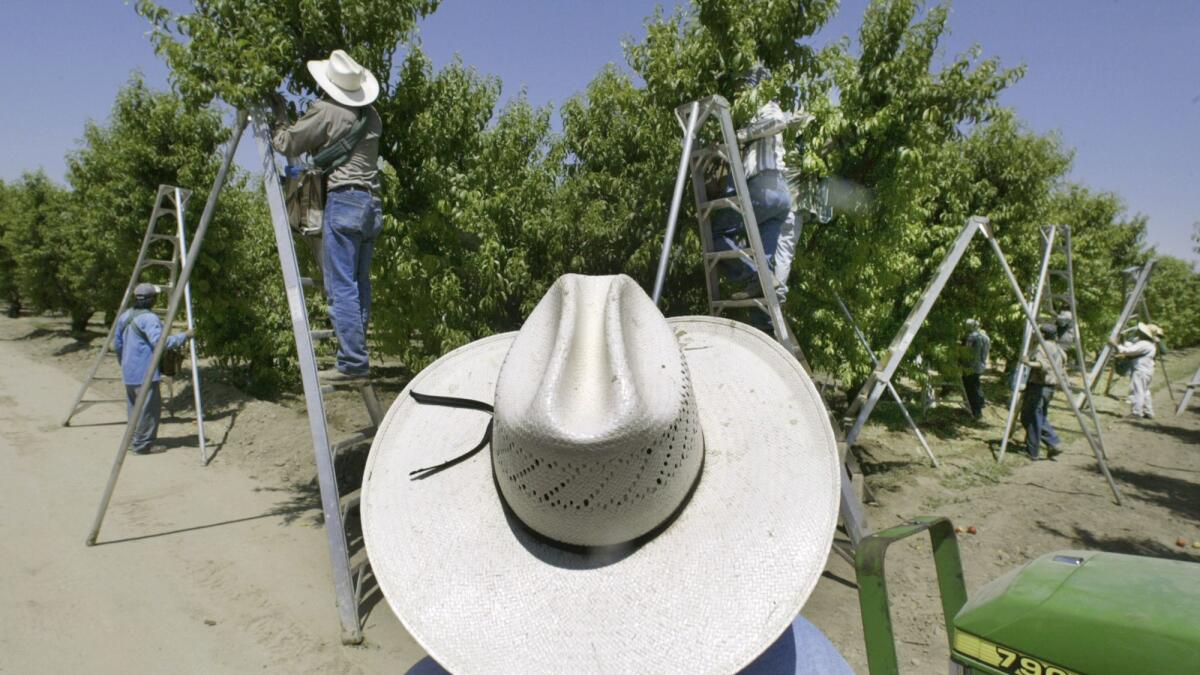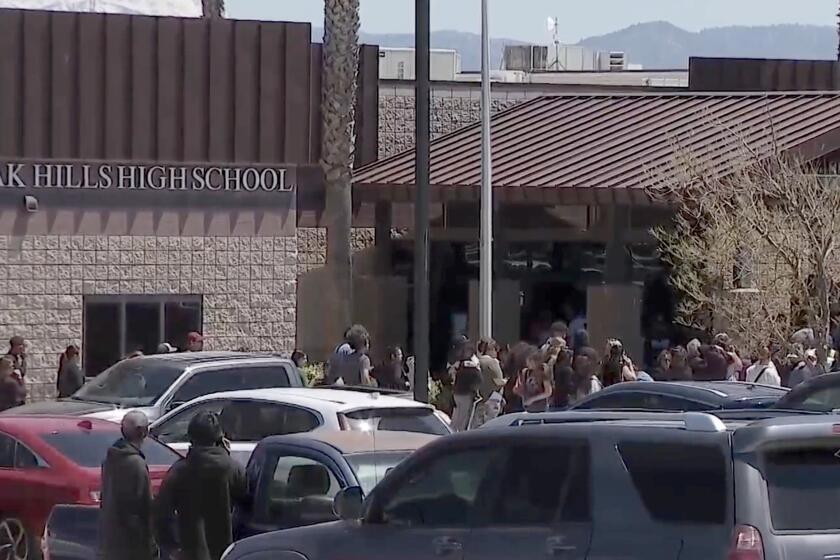Appeals court orders Trump administration to ban pesticide harmful to children’s brains within 60 days

A federal appeals court ordered the Trump administration Thursday to revoke approval for a widely used pesticide that studies show can harm the brains of children.
A three-judge panel of the U.S. 9th Circuit Court of Appeals gave the U.S. Environmental Protection Agency 60 days to ban chlorpyrifos, a pesticide initially developed as a nerve gas during World War II.
“This decision to tell the EPA to do the ban is a pretty bold move,” said Kristen Boyles, a staff attorney for Earthjustice, who represented environmental and farm worker groups in the case.
But she said it was justified by the science and the EPA’s continued foot-dragging.
The 2-1 decision stemmed from a 2007 petition by two environmental groups to prevent the chemical from being used on food.
The groups cited studies that found children and infants who had been exposed prenatally to low doses of chlorpyrifos suffer from reduced IQ, attention deficit disorders and delayed motor development that lasts into adulthood.
“The EPA failed to take any decisive action in response to the 2007 petition, notwithstanding that the EPA’s own internal studies continued to document serious safety risks associated with chlorpyrifos use, particularly for children,” New York District Judge Jed S. Rakoff, who was filling in on the 9th Circuit, wrote for the panel.
The Obama administration proposed banning the pesticide’s use on food crops, but former EPA Administrator Scott Pruitt reversed course last year and decided to retain the pesticide.
The chemical is used on fruits, vegetables and nuts. Hawaii has banned it, and California scientists have listed it as an air contaminant and developmental toxicant, saying it poses risks to children in the air, water and food.
Since Pruitt’s action, several states, including California, joined the litigation in favor of banning the pesticide.
The most recent figures available indicate the pesticide is used on 640,709 acres in California.
Use in California has declined from a peak of more than 2 million pounds in 2005 to 902,275 pounds in 2016.
Most California farmers no longer use the pesticide, said Charlotte Fadipe, a spokeswoman for the state Department of Pesticide Regulation.
The 9th Circuit chastised the EPA for delaying action on the chemical.
“The time has come to put a stop to this patent evasion,” wrote Rakoff, a Clinton appointee. Ninth Circuit Judge Jacqueline H. Nguyen, an Obama appointee, joined the ruling.
The 9th Circuit called the delays “particularly prejudicial here where the continued use of chlorpyrifos is associated with severe and irreversible health effects.”
The court said the EPA had violated the Federal Food, Drug, and Cosmetic Act and the Federal Insecticide, Fungicide, and Rodenticide Act. The laws require the EPA to ban a pesticide from use on food unless there is reasonable certainty that it will cause no harm, the court said.
“The EPA has never made any such determination and, indeed, has itself long questioned the safety of permitting chlorpyrifos to be used within the allowed tolerances,” Rakoff wrote.
Judge Ferdinand Fernandez, an appointee of former President George H.W. Bush, dissented. He argued the appeals court lacked the authority to order a ban pending further review by the EPA.
Environmental and farm worker groups hailed the decision.
“Children, farmworkers, rural families and science are all huge winners today,” said Kristin Schafer, executive director of Pesticide Action Network North America.
“The court affirmed that EPA’s job is to protect public health, not industry profits — and found that their reversal of the planned ban of this brain-harming pesticide was in fact illegal.”
Environmental groups pointed out Thursday that a subsidiary of Dow Chemical is the largest manufacturer of chlorpyrifos. Dow donated $1 million for President Trump’s inauguration.
“Some things are too sacred to play politics with — and our kids top the list,” said Erik Olson, a senior director at the Natural Resources Defense Council, one of the plaintiffs in the case. “The court has made it clear that children’s health must come before powerful polluters.”
Erik Nicholson, national vice president of the United Farm Workers of America, said the EPA “has put the women and men who harvest the food we eat every day in harm’s way too long by allowing the continued use of this dangerous neurotoxin.
“We commend the court for doing what EPA should have done years ago,” he said. “The people who feed us deserve a safe and healthy workplace.”
EPA spokesman Michael Abboud said the agency was reviewing the decision.
The “data underlying the court’s assumptions remains inaccessible and has hindered the agency’s ongoing process to fully evaluate the pesticide using the best available, transparent science,” Abboud said.
The California Farm Bureau Federation said in a statement that it is still reviewing the case.
It called chlorpyrifos “an important part” of many farmers’ pest-management programs, adding, “If the ruling stands, we expect significant impacts to food and fiber production.”
The Dow subsidiary that makes the chemical called it “a critical pest management tool used by growers around the world to manage a large number of pests.”
The company said in a statement that “regulatory bodies in 79 countries have looked at the science, carefully evaluated the product and its significant benefits and continued to approve its use.”
Noting that the 9th Circuit panel was divided, the company said it expected that “all appellate options to challenge the majority’s decision will be considered.”
“We will continue to support the growers who need this important product,” the statement said.
The EPA could ask a larger panel of the 9th Circuit to review the ruling or appeal directly to the U.S. Supreme Court.
Times staff writer Geoffrey Mohan contributed to this report.
Twitter: @mauradolan
UPDATES:
5:15 p.m.: This article was updated with comment from the state Department of Pesticide Regulation and the California Farm Bureau Federation.
3:10 p.m.: This article was updated with additional reaction.
1:55 p.m.: This article was updated with reaction to the decision.
12:05 p.m.: This article was updated with background and additional details from the decision.
This article was originally published at 11 a.m.
More to Read
Start your day right
Sign up for Essential California for news, features and recommendations from the L.A. Times and beyond in your inbox six days a week.
You may occasionally receive promotional content from the Los Angeles Times.







